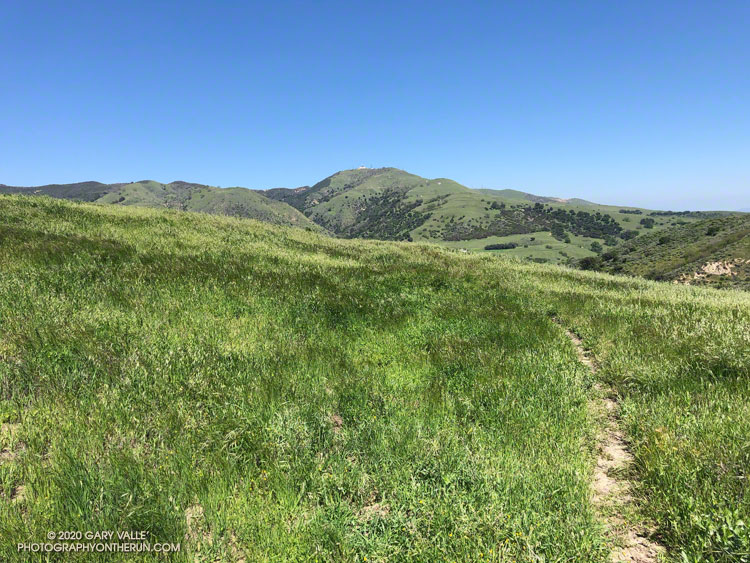
That’s Oat Mountain from near the top of the climb up and out of Las Llajas Canyon. Here’s another view, down the canyon.
The route up the canyon is a demanding part of the Rocky Peak 50K and 30K courses.

That’s Oat Mountain from near the top of the climb up and out of Las Llajas Canyon. Here’s another view, down the canyon.
The route up the canyon is a demanding part of the Rocky Peak 50K and 30K courses.
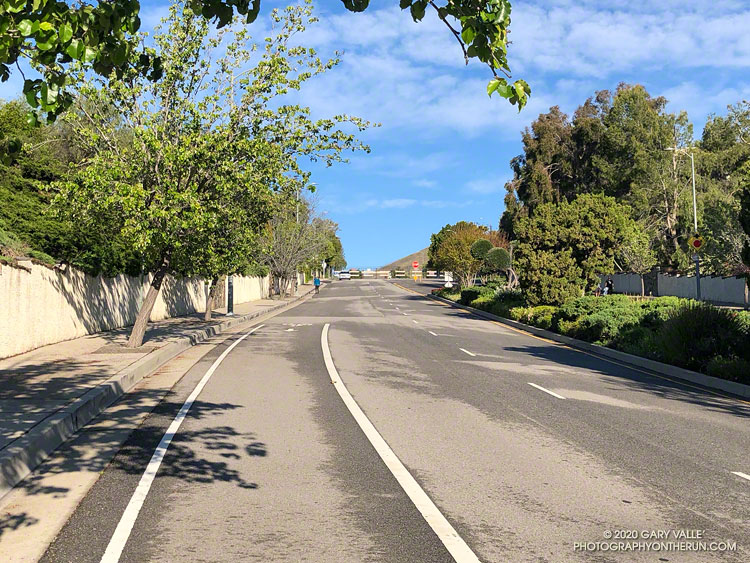
Sometimes when I’ve driven to the Ahmanson Trailhead to do a run, I’ve wondered what it would be like to run there (and back) from home. Now I know.
It’s a good run. Roundtrip, it was about 8.2 miles, with an elevation gain of about 600′.
The highlight of the run is the climb up Victory Blvd from Valley Circle. There’s a nice view of the San Gabriels from the hill, but not quite as nice as the view from Lasky Mesa!
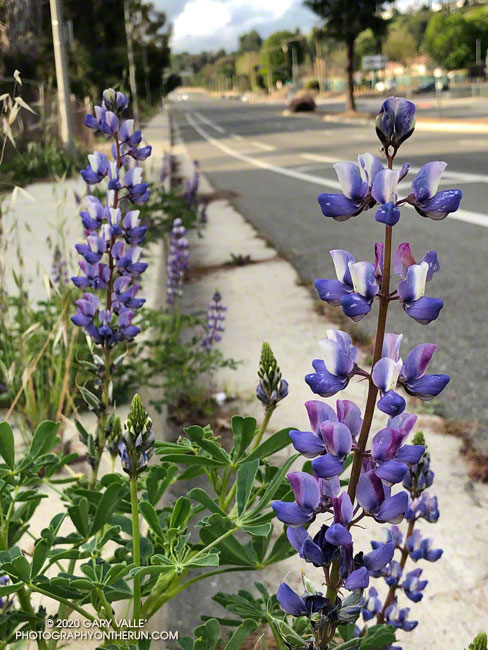
Arroyo lupine (Lupinus succulentus) is one of the first lupines to bloom in the local grasslands and open areas of chaparral. Here it’s blooming along Valley Circle Blvd. in the West San Fernando Valley.
Another early bloomer is miniature lupine (Lupinus bicolor), a tiny lupine that is best viewed on your hands and knees. On Lasky Mesa it typically begins to bloom in mid to late February, about the same time as goldfields.
From this morning’s out and back run to check out a local trailhead.
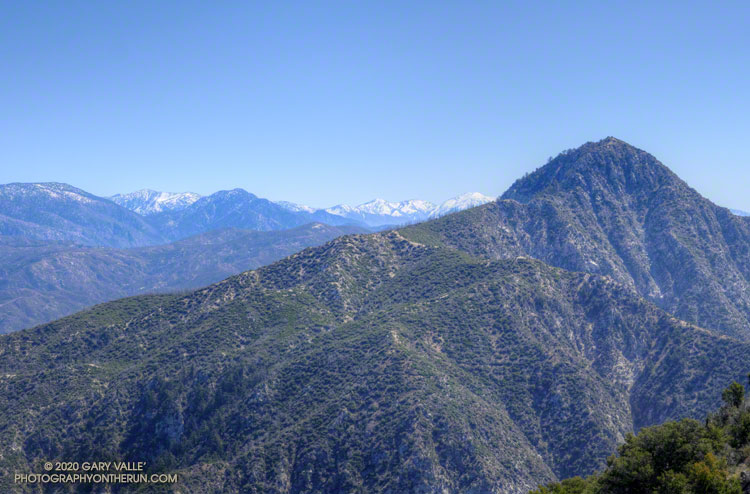
A hazy view of Strawberry Peak (6164′) and the high country of the San Gabriel Mountains from Josephine Peak.
Here’s a zoomed view of the high country with the peaks identified.
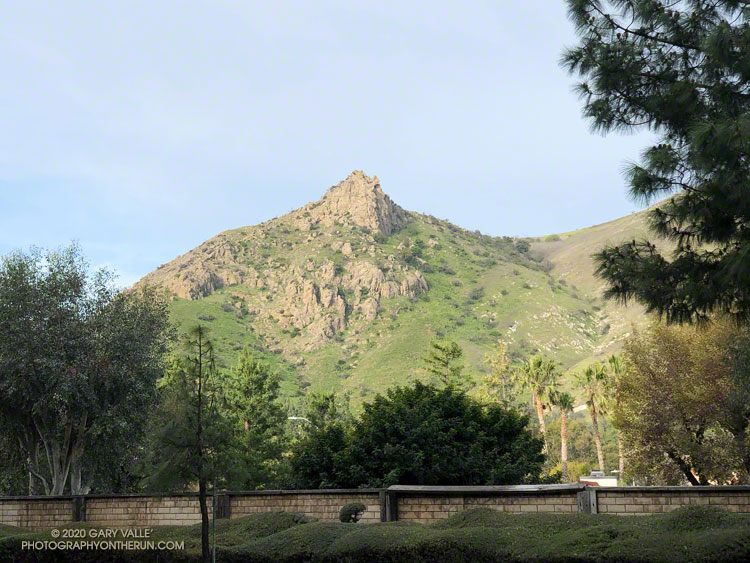
On today’s run, a muted morning sun highlighted Castle Peak in a tree-framed view from Valley Circle Blvd. This native bush sunflower (Encelia californica) was happily growing along a side street.
With MRCA/Santa Monica Mountains Conservancy lands and trails closed, local State Parks closed, and County trails closed, street views will be the norm for a while.
Related post: Castle Peak
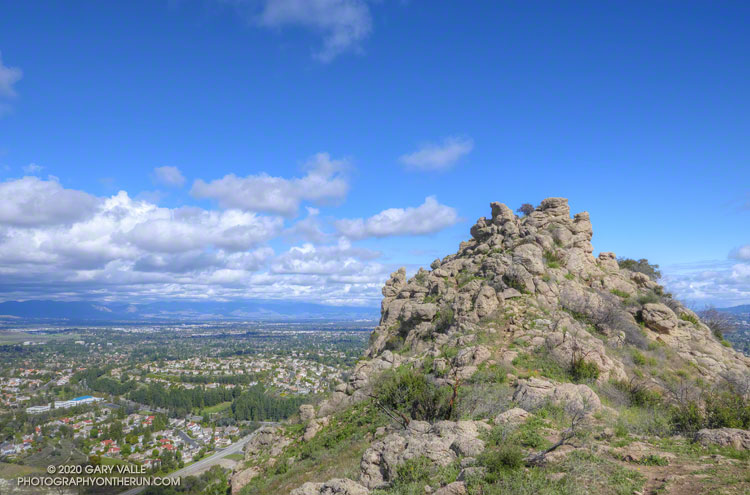
First published May 12, 2007.
From the rocky summit of Castle Peak I traced the course of Bell Creek into the San Fernando Valley, imagining the broad valley as it might have been a few hundred years before. Bell Creek would have joined Chatsworth and El Scorpion Creeks to form the Los Angeles River. Unconfined, the river would have been a riparian ribbon of willow green, winding its way across the valley and through a patchwork of grassland and sage scrub. Areas of the valley would have been punctuated with oaks, wetlands, and scattered chaparral.
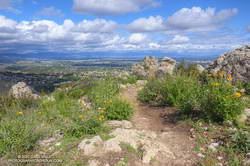
A wall of marine haze would likely be seen near Kaweenga, and threads of smoke might mark the location of other communities. Later in the year, the grasslands would be set afire, promoting next year’s growth, and protecting and enhancing the health of the oaks. As they do today, the San Gabriel Mountains would beckon in the east — but would be antenna free.
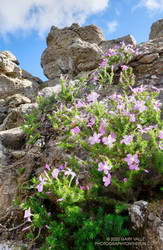
There would have been little noise… No distant horns, freeway drone, or roar of airplanes. Occasionally, a broken voice might have wafted up from the community below. The wind would rustle between the summit rocks, and the loudest noise might be the song of the canyon wren, or screech of the scrub jay.
Known by the Ventureño name Kas’élewun, Castle Peak is a landmark of spiritual significance to the Chumash and Gabrielino. Perched at the end of a tongue-like ridge, the peak stood over the multi-cultural community of Huwam, where Chumash, Tongva and Tataviam people lived.
Kas’élewun and the nearby Cave of Munits were places of power and ceremony. Stories would be told of the sorcerer Munits and his death upon the mountain, and of a gruesome creature inhabiting its caves. Some would tremble at the thought, and an angry parent might caution a child to behave, or risk angering the beast on the mountain.
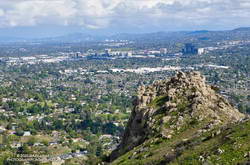
It is a haunting night, and torn clouds race past a silvery moon. From the margin of the village I glance up to Kas’élewun to see a solitary figure briefly silhouetted on its summit. I rub my eyes and only the clouds remain…
Note: Like so many placenames in the Valley, “Castle” appears to be a corruption of the Chumash name for the peak, Kas’élewun. Rather than alluding to a castle, it can be translated as “tongue,” perhaps because the formation sits at the end of a long ridge that extends out into the valley . The title photograph of Castle Peak is from a run on March 19, 2020.